10 Sales Commission Structures & Examples for 2023
Casey O'Connor
Your sales commission structure is one of the most important contributors to the success of your sales team — not to mention your bottom line.
There are a variety of different commission structures and compensation plans that may work for your sales organization. Each model offers something slightly different in terms of base salary, commission rate, and/or bonuses.
In this article, we’ll discuss the various compensation options available to you, and help you learn how to calculate the best fit for your company to incentivize your sales team and maximize your profitability.
Here’s what we’ll cover:
- What Is a Sales Commission Structure?
- Importance of a Commission Structure for Sales
- 10 Sales Commission Structures + Examples
- Which Sales Commission Structure Is Best for Your Team?
- Sales Commission Structure Best Practices
- Average Sales Commission Rates by Industry
What Is a Sales Commission Structure?
A sales commission structure outlines how a company compensates their sales professionals, specifically in regard to commission.
A commission structure is designed to motivate, incentivize, and reward sales professionals for specific sales activities and overall sales performance.
There are many different types of commission structures (including one that includes no commission at all). They can provide commission on a weekly, biweekly, or monthly basis.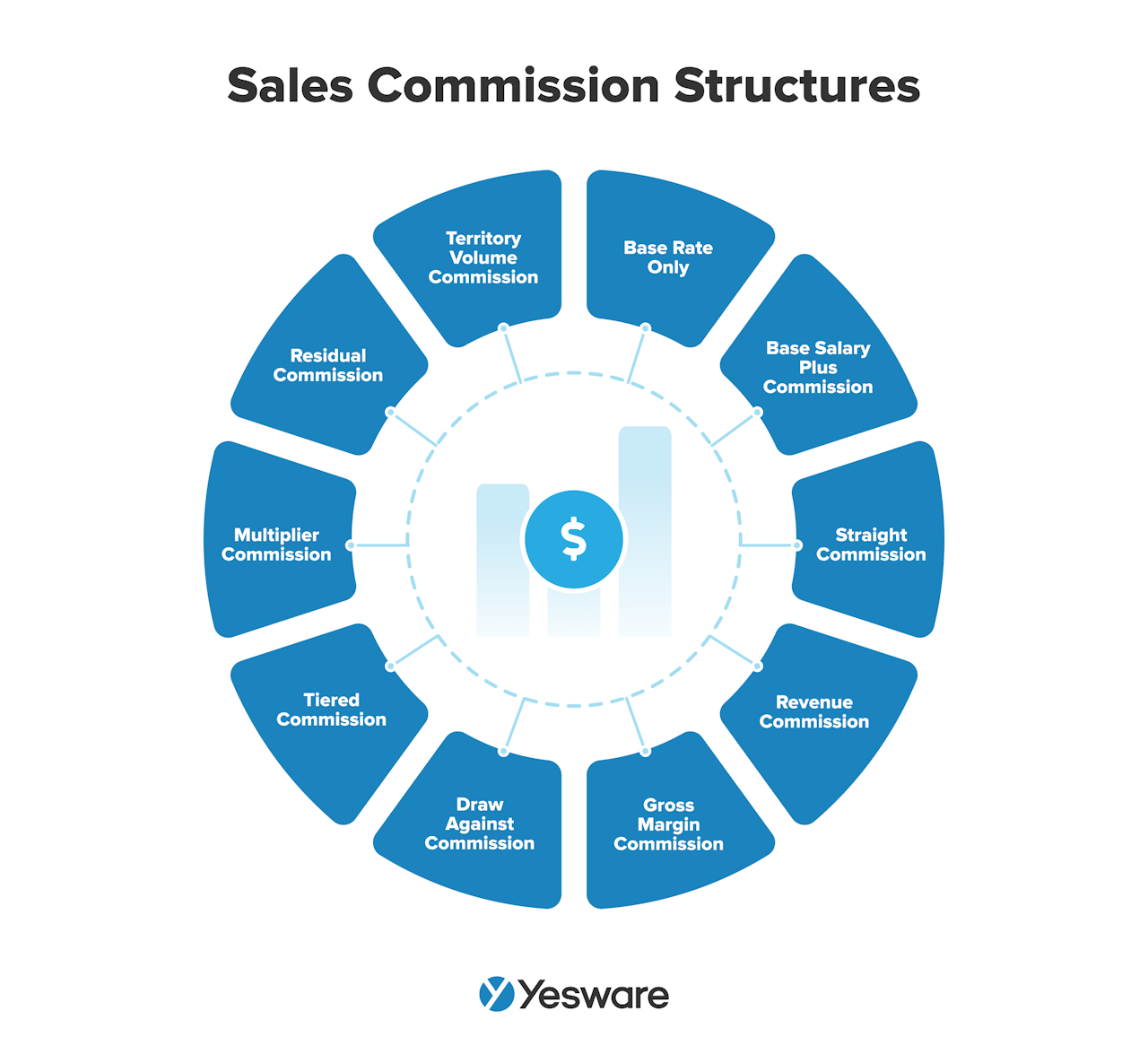
Importance of a Commission Structure for Sales
Your commission plan is one of the most important things to consider as a sales leader or hiring manager. It can help you:
- Motivate individual sales reps to perform at their highest level
- Attract top-tier sales professionals to remain competitive in your field
- Fine-tune your sales process so that you can track various performance metrics and address any areas of weakness
Employee Performance
A carefully designed sales compensation plan can be highly motivating to your sales team.
Ideally, it should encourage your sales representatives to work at a level or pace that’s challenging for them over the course of most of the month/year — but not so difficult that they feel like they can never meet their sales goals.
Benchmarks and sales goals should be high-reaching and help bolster the company’s financial needs, but they should also be attainable to your reps who work hard to meet them.
Less Turnover & Better Competitiveness
It’s no coincidence that companies with fantastic compensation structures have the highest retention rates.
In fact, a study conducted by Forbes reveals that compensation is the number one reason why employees in the U.S. quit their jobs. Various other studies confirm this same finding.
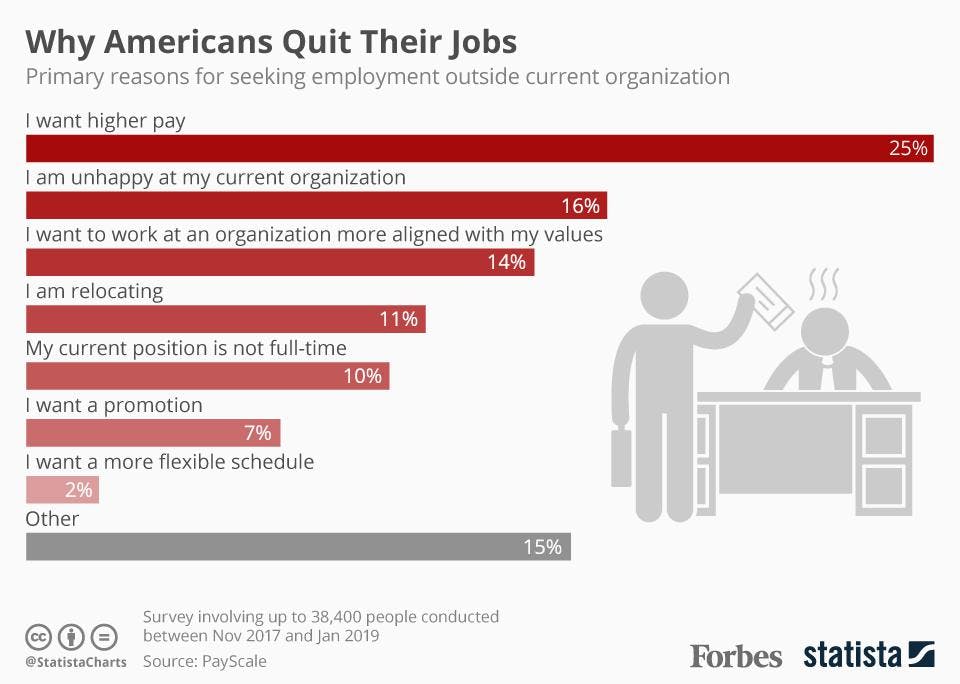
Companies paying at the 75th percentile have 50% less turnover. For sales management, lower turnover means:
- Increased productivity
- Less money spent on attracting and onboarding new salespeople
- The ability to create concrete sales goals, which will ultimately lead to more long-term, predictable, and sustainable growth
The best sales commission structure for your company will be unique to your needs and goals, but having one that’s both lucrative and challenging is a great way to motivate and retain an elite sales force.
Streamline Your KPI-Tracking Process
A well-defined commission model will allow you to break down the sales process and evaluate which sales reps are top performers, and which reps may need more training.
Looking solely at total sales is an inaccurate picture of how a sales rep is performing. Check out the most popular sales KPIs teams are tracking today.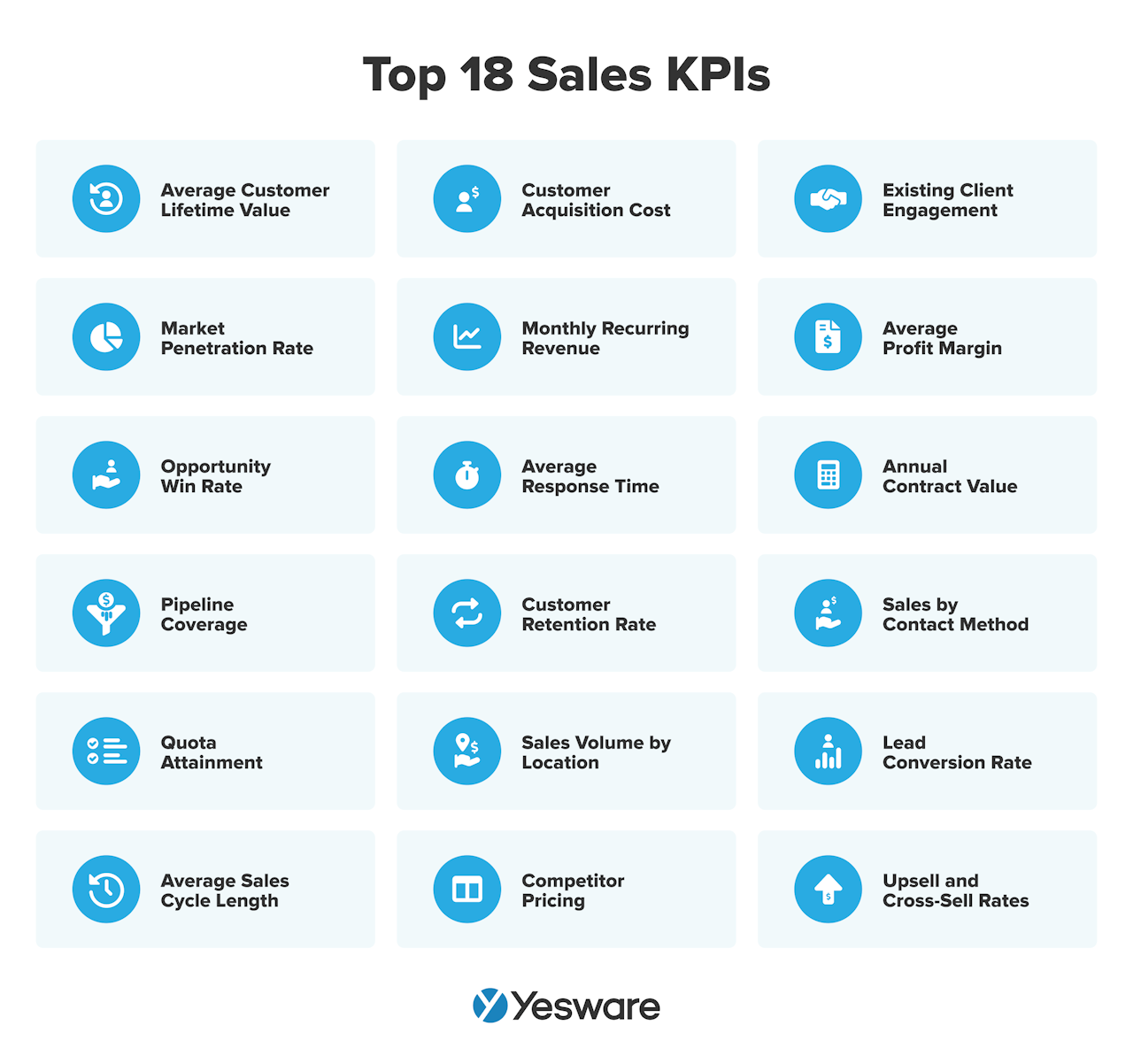 A clear sales commission structure will help you logically break down the various performance metrics of your team members and evaluate them accordingly.
A clear sales commission structure will help you logically break down the various performance metrics of your team members and evaluate them accordingly.
10 Sales Commission Structures + Examples
There’s a wide variety of structures that may meet the needs of your company.
While there are many models to choose from, don’t feel like you have to be locked into any one template. Keep in mind that most companies end up taking a hybrid approach, and will “mix and match” aspects from many of the following models as they’re best suited to their own sales teams.
1. Base Rate Only Commission
A base rate-only model is uncommon in the sales role, but still worth reviewing.
The definition is pretty simple: base rate only means reps are only paid a standard salary, and not compensated any extra for the deals they close.
As you can imagine, this model isn’t particularly motivating — why work overtime to close that six-figure deal if you’re not going to be rewarded for it? That being said, it can sometimes work well for companies that get most of their business from inbound marketing. In these cases, sales reps are a bit more hands-off, and usually take more of a customer-management role than a sales rep one.
Base Rate Only Example
All junior sales reps receive $2,000 in salary compensation, twice a month, regardless of how many sales they make or the revenue they bring in for the organization. All senior sales reps receive $3,000 in salary compensation, twice a month, regardless of how many sales they make or the revenue they bring in for the organization.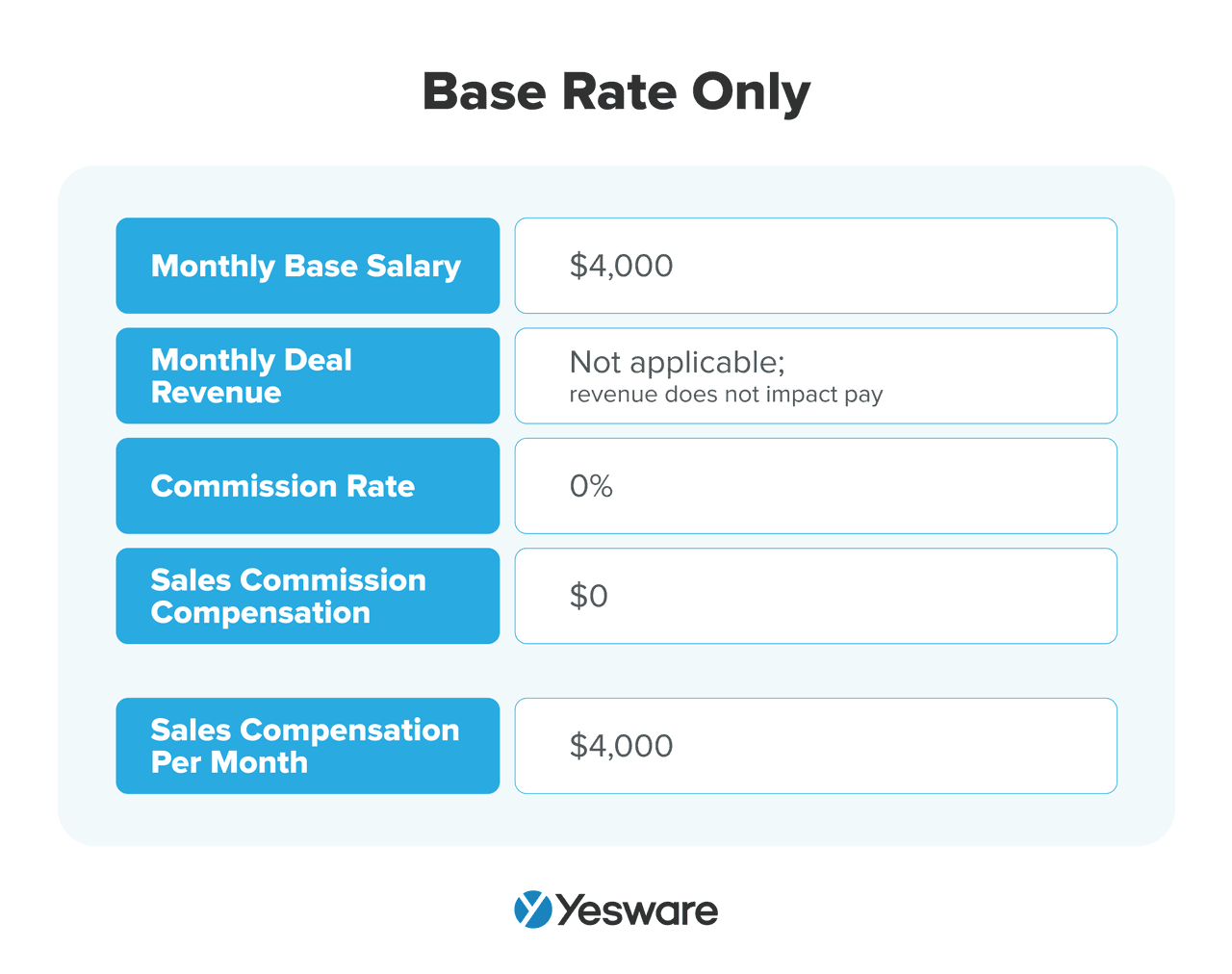
2. Base Salary Plus Commission
In a base salary + commission model, a sales rep is paid a certain monthly or annual salary, regardless of how they perform. They also have the opportunity to earn a commission on each sale they make.
Usually, the base salary isn’t high enough to make a very comfortable living, so sales reps are incentivized to work hard to meet their commission goals. A base salary + commission is a good balance between financial security and financial incentive.
The sales process and customer satisfaction both benefit from this model, as well. Customers and salespeople can each retain their integrity throughout the process, because there isn’t as much at stake if the rep doesn’t close any one deal — they still have their base salary to fall back on.
Base Salary Plus Commission Example
A sales rep receives $2,000 every two weeks in base salary, regardless of how many sales they make. They also receive 10% of the value of each sale he makes.
In March, the sales rep sells $5,000 worth of products. Their salary for March will be $4,500 ($2,000, twice a month, plus 10% of his $5,000 in sales).
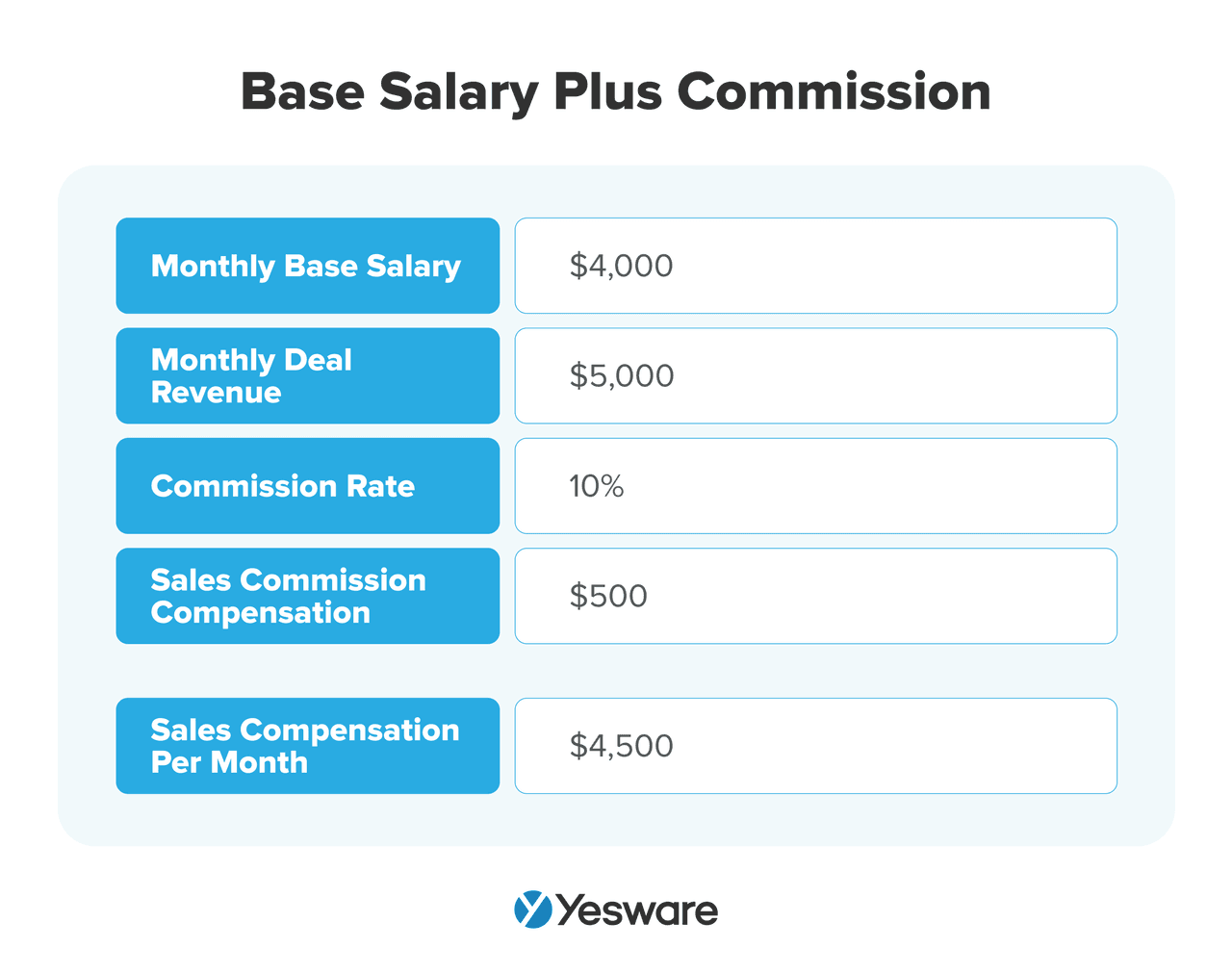
3. Straight Commission
With a straight commission model, also known as a commission-only model, sales reps are not paid a base salary. The only income they receive is generated directly from the number and value of the deals they close.
This model has its pros and cons. On the one hand, it can be attractive for some companies, especially those with shorter sales cycles and/or higher-value deals. It’s also favorable for cash-strapped startups — they only need to payout when new customers are acquired.
It can also be attractive to a specific type of salesperson. Because there’s no commission cap, the earning potential can get very high with this model.
On the other hand, this model can also be risky for sales reps. There’s no guarantee at the end of the day that they’ll make a living wage, and even the best sales reps run into unforeseen circumstances where deals are harder to close.
Straight commission models are also known for leading to higher turnover rates and poor morale. Because of this, most companies use them primarily for 1099 employees and independent contractors.
Straight Commission Example
A salesperson receives a monthly base salary of $0 but generates monthly deal revenue of $60,000. Their commission rate is 13%. So, they receive $7,800 as their compensation for the month. 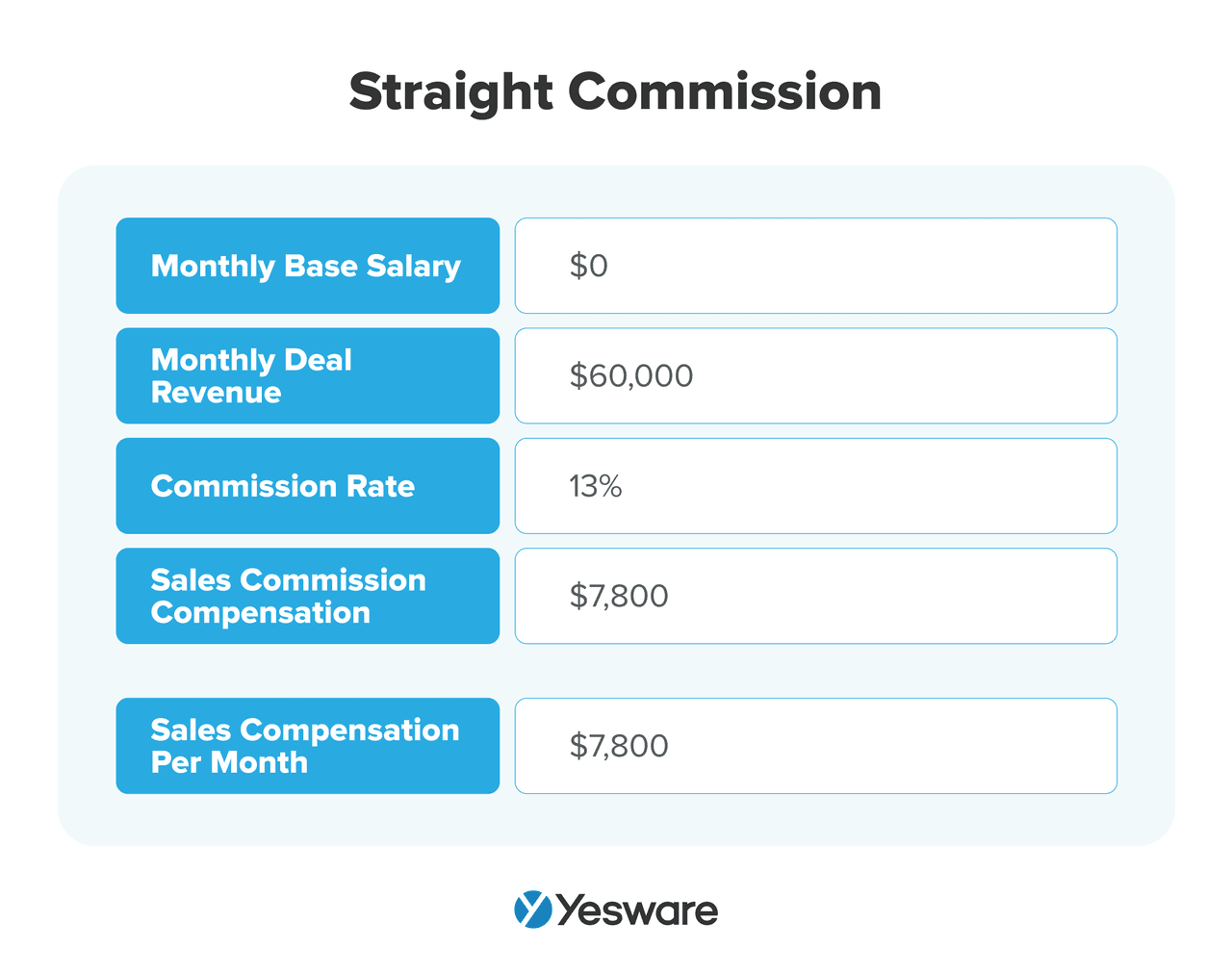
4. Revenue Commission
With a revenue commission model, sales reps are paid a commission that’s a percentage of the total amount a deal brings in.
This model doesn’t take into account any of the other costs of closing the deal (marketing, customer support, etc.). In other words, it’s not about profit — it’s about bigger-picture goals and overall money coming in.
This model works well for products and services that have a set price.
Revenue Commission Example
A sales rep sells marble countertop slabs for $25,000 each. They receive a 5% revenue commission on each sale. For each countertop slab they sell, they receive a $1,250 commission payment.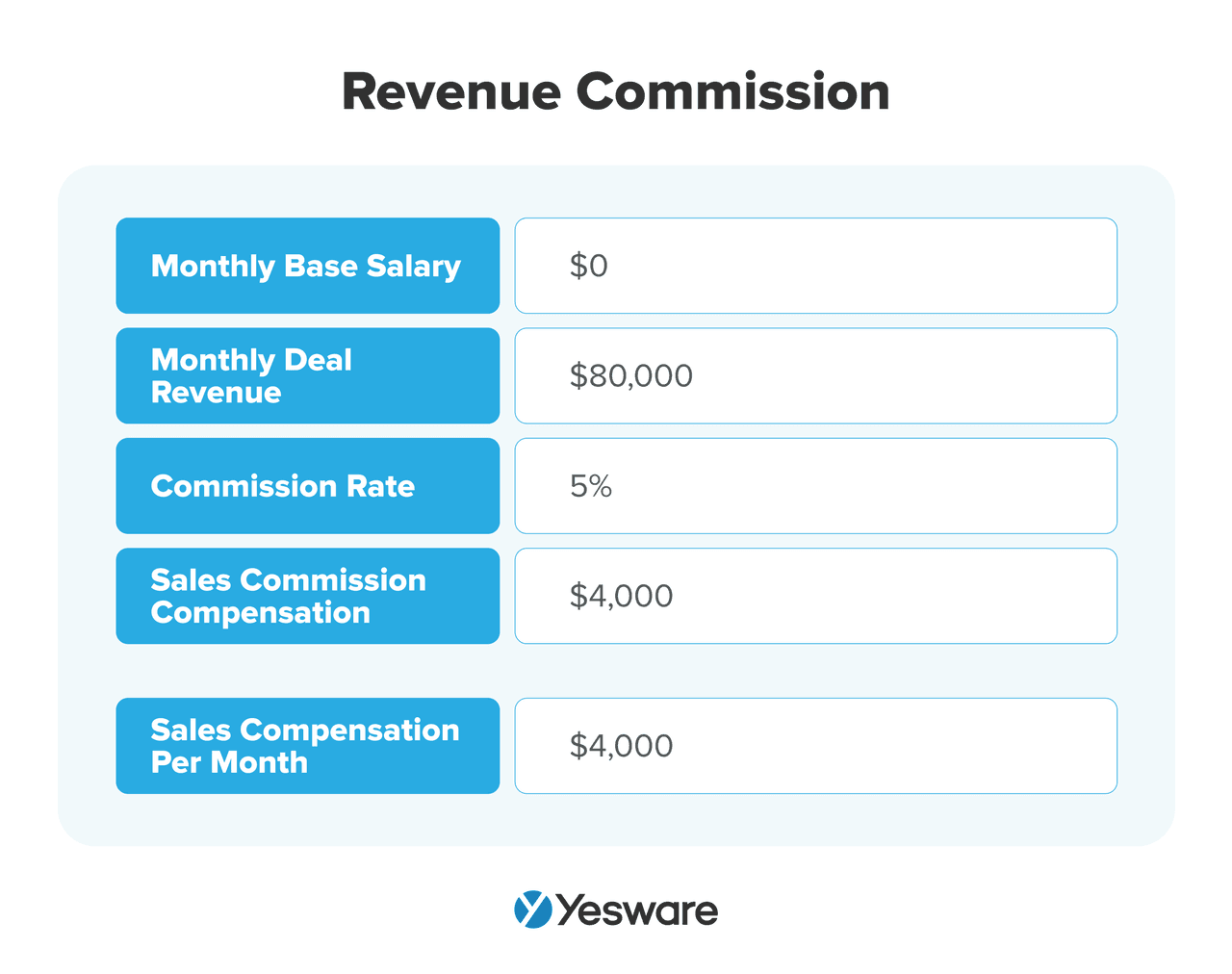
5. Gross Margin Commission
The flip side of revenue commission is gross margin commission. With this model, commission is paid based on the profit a deal brings in for the company. This compensation structure incentivizes reps to push higher ticket items and discourages them from offering discounts.
Gross Margin Commission Example
A salesperson sells a $50,000 manufacturing machine component. The component costs $30,000 to produce; the company makes a $20,000 profit on every sale. The sales rep receives a 10% commission on the profit of the sale. If they sell one product, they receive $200 in commission (10% of the $20,000 profit).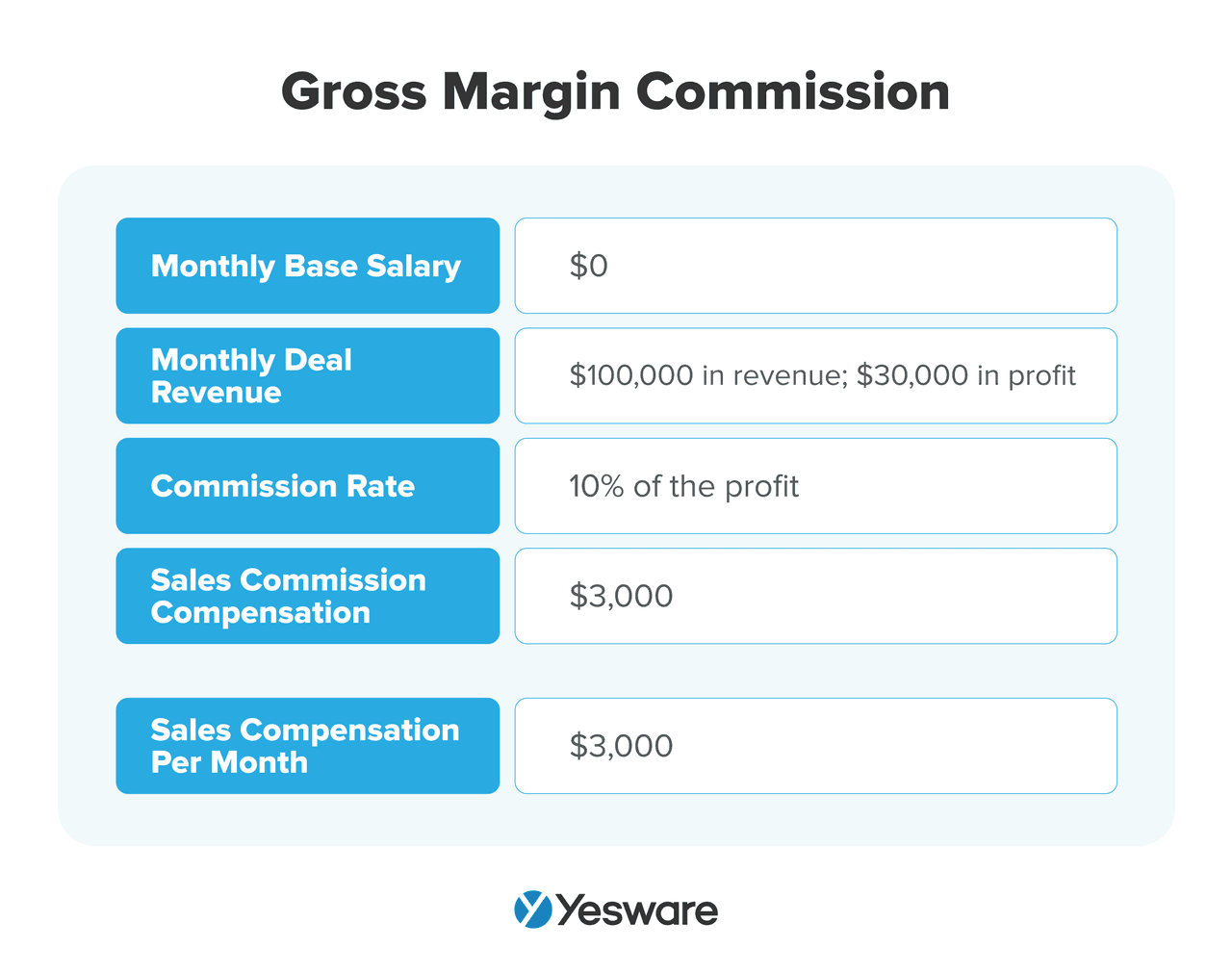
6. Draw Against Commission
The draw against the commission model is slightly complicated. There is an aspect of guaranteed pay, but also holds sales reps accountable and incentivizes them to work hard for their commission.
A draw against commission is a kind of advanced payment that a rep receives to hedge their own performance. In some cases, the draw is more of a loan than payment and will need to be paid back in its entirety.
This structure is good for companies in periods of growth or uncertainty. It can also be effective in getting new sales reps off the ground.
Draw Against Commission Example
A salesperson is projected to earn $6,000 in commission in a pay period. They receive a $3,000 “draw” at the onset of that pay period. If they reach their target of $6,000, they’ll receive $3,000 in additional compensation at the end of the pay period.
If they fall short of their target but exceed $3,000 in sales, they’ll receive the difference between the draw and their earnings. And if they fall short of matching the $3,000 draw, they’ll owe the company the difference between $3,000 and what they actually earned at the end of the pay period.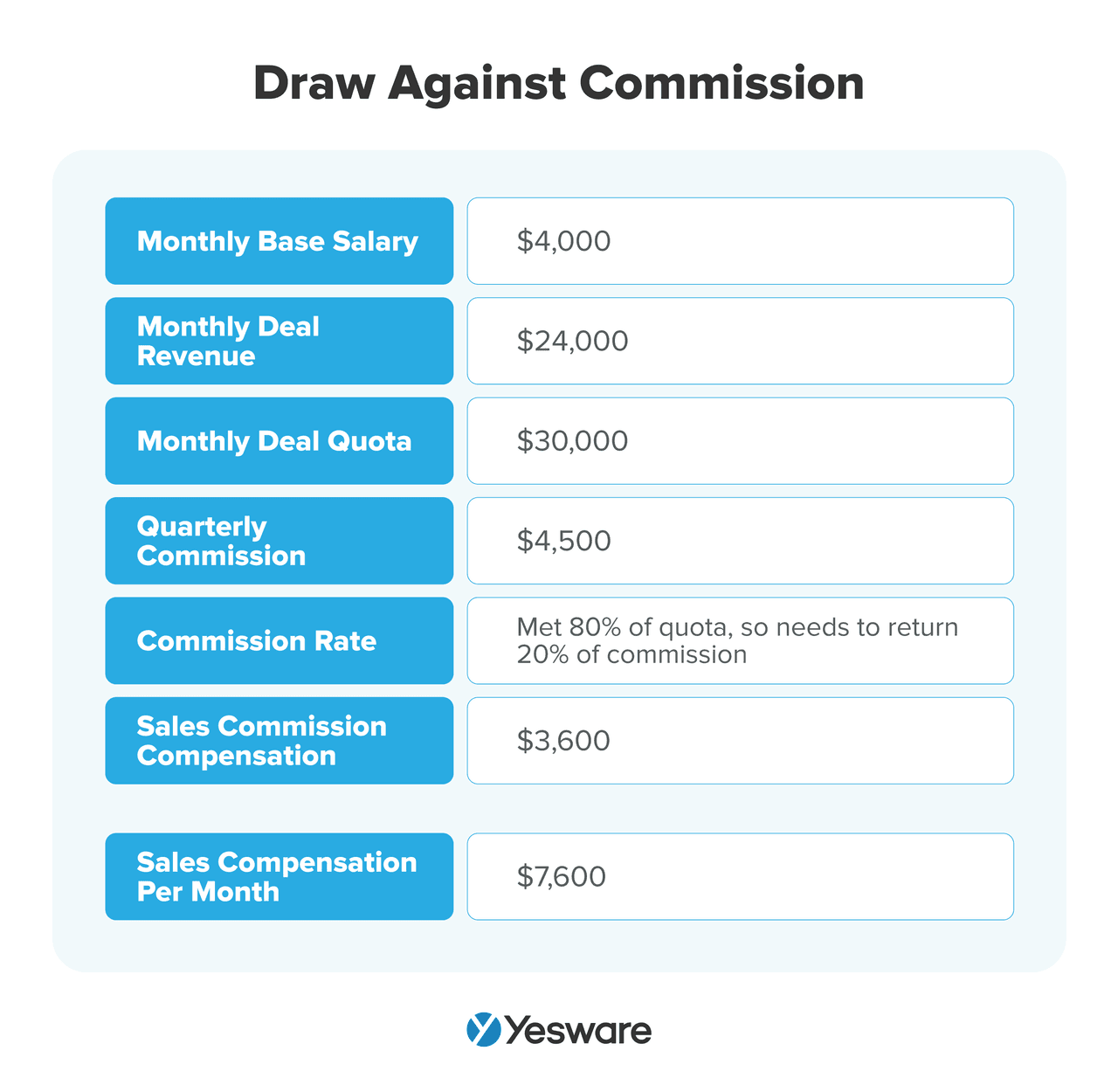
7. Tiered Commission
With a tiered commission model, sales reps can earn higher commission rates as they meet certain sales quotas. For example, a sales rep may receive an 8% commission rate until they close 100 deals. After the 100th deal, they then start earning an 11% commission rate. This can also be arranged based on the dollar amount.
This compensation structure is great for top performers and sales reps who are highly motivated. It encourages reps to work upsells and new product offerings. Although uncommon, some companies also have tiered commissions for the downside. That is, a company can reduce a commission rate if a rep doesn’t meet their quota.
The tiered commission model is great for maintaining employee motivation over time.
Tiered Commission Example
A sales rep earns an 8% commission on all revenue they generate up to $7,500. If they surpass $10,000 in revenue, they receive a 10% commission on all revenue from $7,500 to $10,000. Any revenue earned at or beyond $10,000 generates a 12% commission for the sales rep. 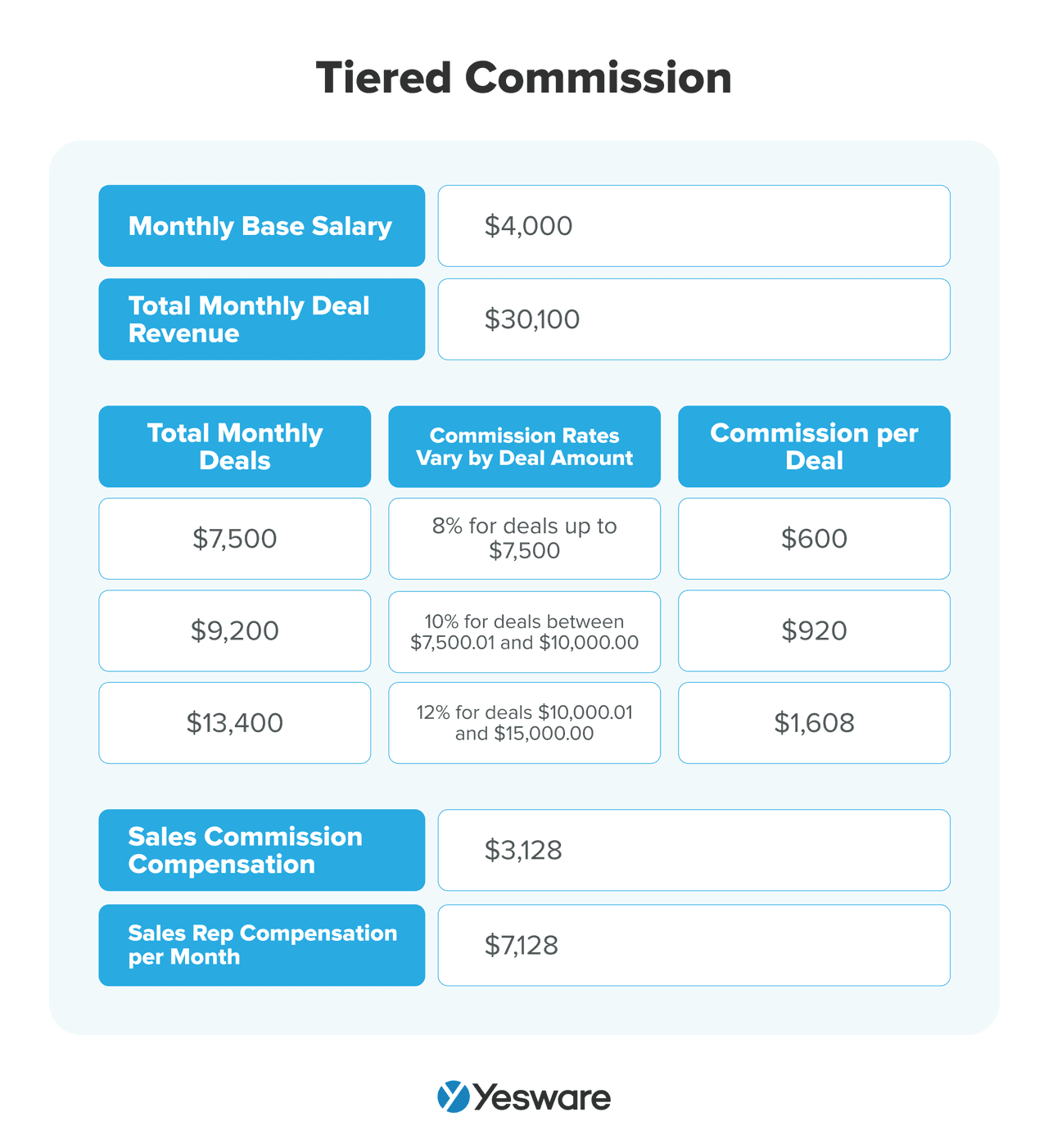
8. Multiplier Commission
Multiplier commission can get complicated. It’s the most customized of the standard “templates,” but hammering out the details can be worth it — this model is highly motivating to many sales reps.
With multiplier commission, a sales rep is compensated based on their performance against several KPIs. They start with a standard commission rate, but the commission rate is then multiplied by a predetermined factor based on key performance metrics.
This can be a really effective way to target and refine specific seller behaviors and motivate your reps to fine-tune their sales techniques throughout the process.
Multiplier Commission Example
A sales rep is compensated with a 5% commission rate. That rate is then multiplied (hence the name of the commission plan) by a certain percentage depending on how close they are to hitting their quota.
If, for example, they’re anywhere from 0% – 75% of the way to meeting quota, they will receive 80% of their commission rate — 80% is the multiplier here. This multiplier earns the rep 4% of their commission until they reach 75% of their quota.
If they reach between 76% and 90% of their quota, the rep will earn 90% of their commission — 4.5%.
Reps who hit 90% – 100% of their quota earn 100% of their commission at the full 5%.
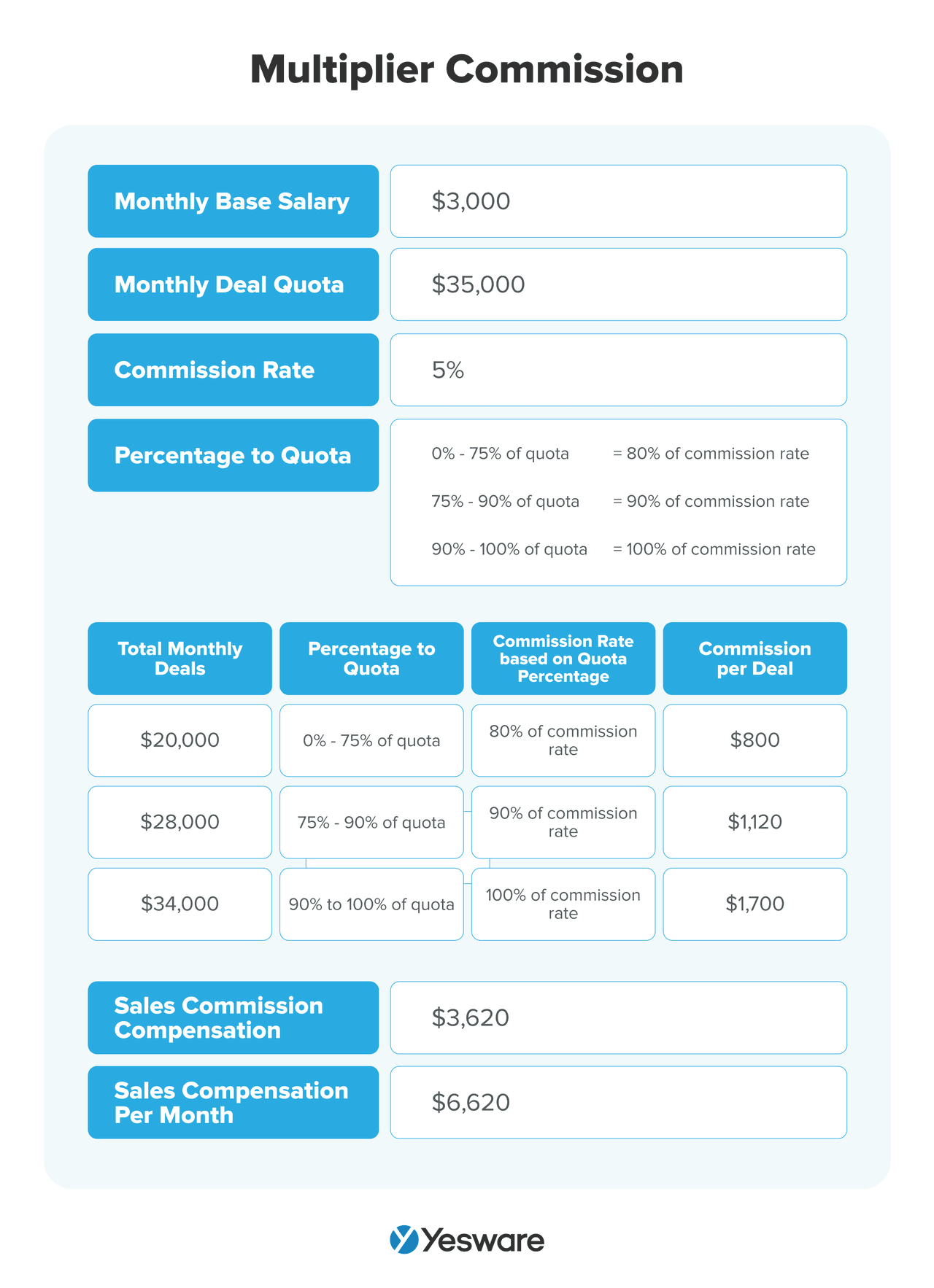
9. Residual Commission
With residual commission, a sales rep will earn a certain percentage of commission if their customer continues to bring money into the company after the initial deal is closed.
For example, if a customer renews their contract after the original one expires, the sales rep who closed the deal will get a commission when they re-sign.
A residual commission rate is typically lower than a standard one, but can still represent a lucrative passive income opportunity for sales reps.
Residual Commission Example
A SaaS salesperson signs a new client on a two-year contract. Under the contract terms, the customer pays the company $3,000 per month for the software. The sales rep who sold the software receives a 5% residual commission, meaning they get $150 per month for every month of the contract.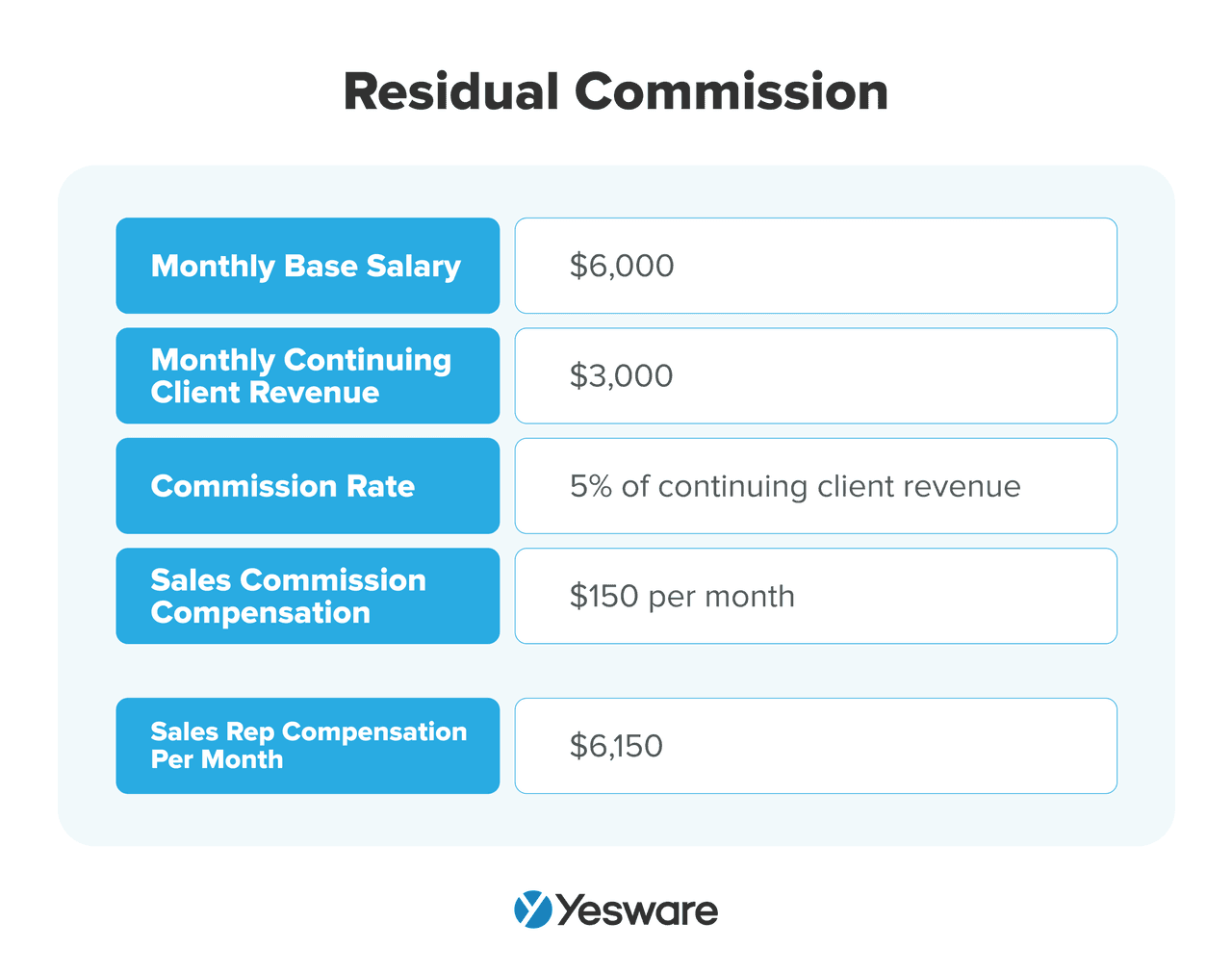
10. Territory Volume Commission
A territory volume commission plan pays sales reps on a territory-wide basis, rather than according to their individual performance.
With this type of commission plan, sales reps work together to meet a territory-wide quota for a clearly-defined geographical region. When the sales period is over, the commission for the total sales for the region is divided equally among the sales reps who cover that region.
This is a great model for organizations whose sales are spread across many regions, and who are aiming to fortify particular territories. It’s also effective for longer and more complex sales cycles, or for those with several touch points throughout the process.
Territory Volume Commission Example
Five salespeople are assigned to the “Northwestern Region,” and are responsible for hitting a quota of $500,000 in sales over a single quarter. The commission rate for this territory is 10%.
The reps’ sales for the quarter are as follows:
- Sales Rep 1: $110,000
- Sales Rep 2: $87,000
- Sales Rep 3: $108,000
- Sales Rep 4: $92,000
- Sales Rep 5: $108,000
The sales reps responsible for this territory hit their quota and earned their 10% commission rate. The total sales for this region were $505,000, so the total commission earned is $50,500.
The total commission is then divided evenly among the sales reps responsible for that region — despite the fact that some sold more than others — giving each rep a payout of $10,100.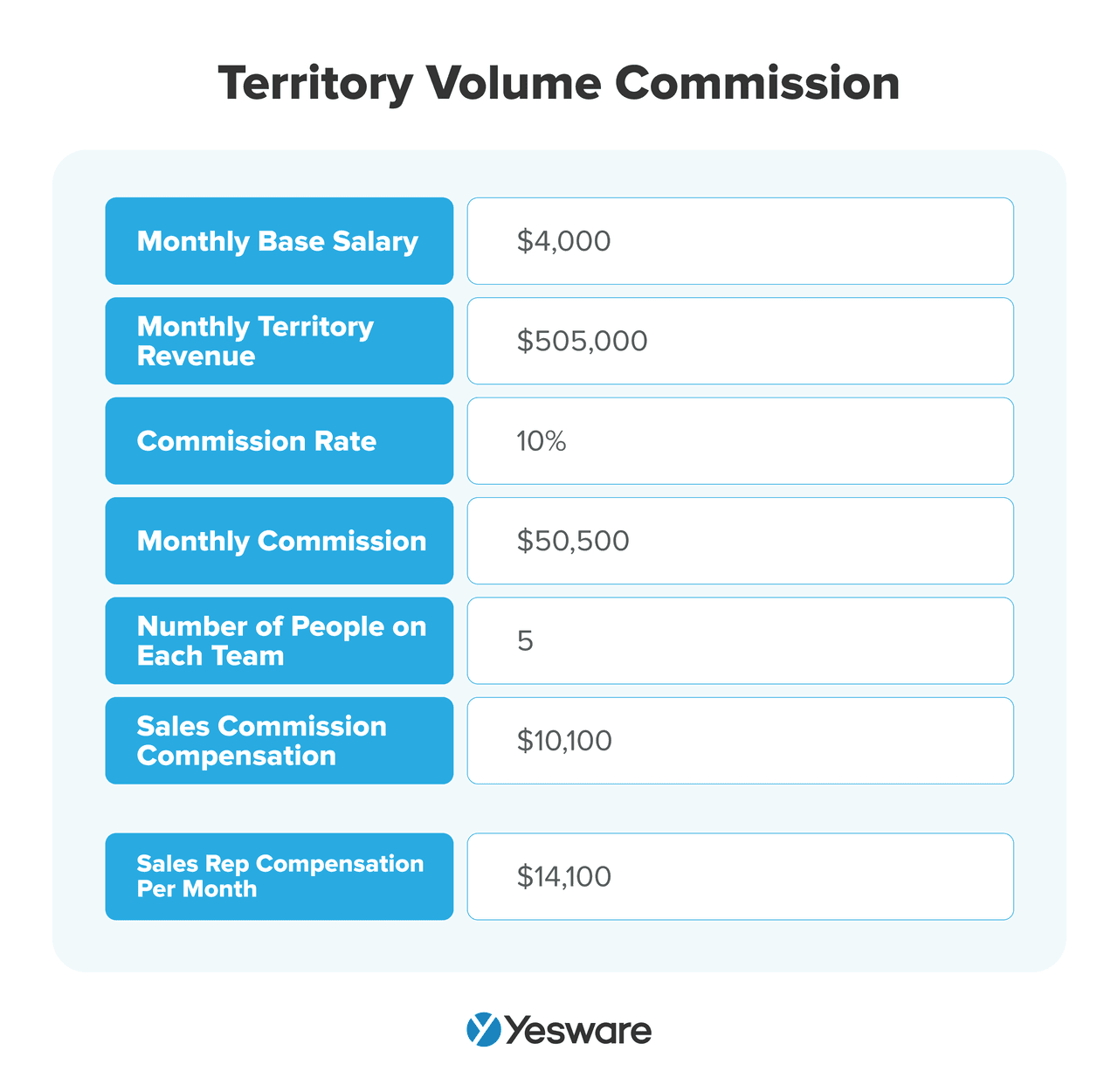
Which Sales Commission Structure Is Best for Your Team?
The right sales commission structure for your team will be highly unique and specific to your organization’s goals, sales team talents, industry, location, and more.
Commission structures are not one-size-fits-all, nor are they expected to stay the same over the course of a business’s existence. It’s okay to adapt and change a commission structure over time as sales goals are reached and new ones are created.
Before you design your sales commission structure, ask yourself the following questions. They will help you determine which behaviors you hope to motivate, and which goals can be reached with the right incentives.
- What behaviors or results are you hoping to target? Lead generation? Effective lead qualification? Personalizing the demo? Customer loyalty? The more specific you are in your targets and goals, the better you can structure your commission plan accordingly.
- Is your sales process optimized? Does your sales process match the buyer’s journey? Are there any areas in which you can more intentionally align the two? This will help you pinpoint which processes and behaviors you need to incentivize.
- Are your goals and performance expectations realistic?
- What motivates the sales professionals in each of your sales roles? What responsibilities do they each have? Will your organization be best served by one single commission structure, or separate ones based on roles or responsibilities?
- How can you encourage your sales team to perform above and beyond expectations? What motivates them to exceed quota?
Industry data can help provide some benchmarks as you navigate the process of determining the best sales commission plan(s) for your team.
Tip: Looking to grow your sales team? Grab our free ebook on scaling B2B teams below.
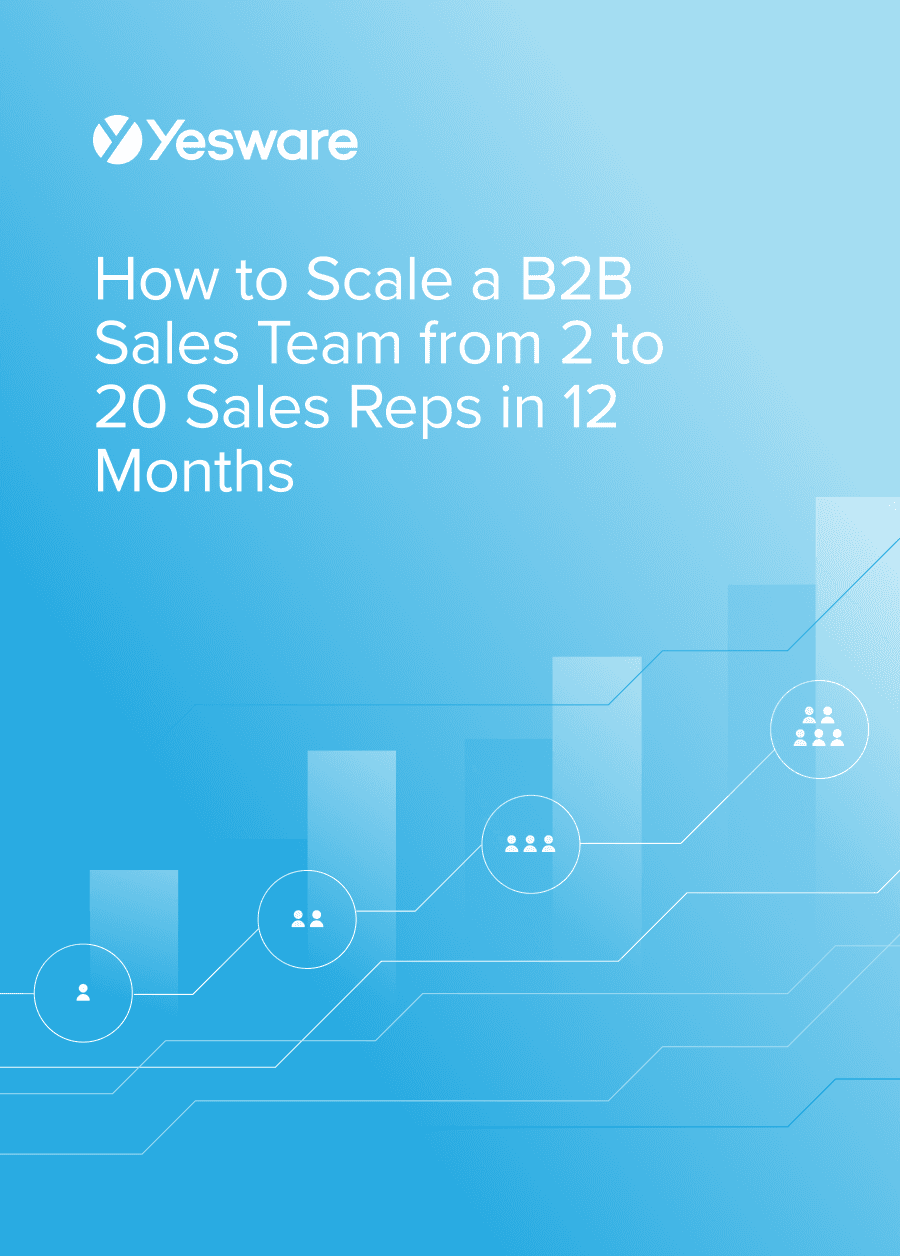 How to Scale a B2B Sales Team from 2 to 20 Sales Reps in 12 MonthsA step-by-step blueprint and action plan for growing a sales team in a way that maximizes profitability.
How to Scale a B2B Sales Team from 2 to 20 Sales Reps in 12 MonthsA step-by-step blueprint and action plan for growing a sales team in a way that maximizes profitability.
Sales Commission Structure Best Practices
Although there are plenty of commission structures to choose from, they all require the same general best practices.
Choose the Right Incentives
Create your sales commission structure based on your sales goals and larger organizational visions. If, for example, your team is looking to close more high-value clients, you might offer a higher commission rate for deals closed above a certain threshold.
You can even go a step beyond that and offer smaller, more incremental sales incentives that reward specific behaviors. Bottom-line outcomes are important, but it’s salespeople’s day-to-day behaviors that lead the team there (or not).
Be Explicitly Clear
Sales managers need to make sure their sales commission structures are outlined clearly, thoroughly, and with full transparency to all members of the team. Be upfront about how much sales reps will be paid, when, in what format, and as a result of what specific behaviors and/or outcomes.
If you want to really build trust and team culture, you might even consider collaborating with your team to create the commission structure together.
Pay Up (And Be Generous)
This should go without saying, but make sure that you’re upholding your end of the deal when it comes to commission. Pay your reps the amount you promise them, and do it on time.
Make sure you apply this principle across contracts; don’t find loopholes to avoid paying sales reps what they’re due. Always err on the side of generosity. SaaS companies, for example, have unique considerations when it comes to sales commission, as contracts may vary in value and length.
If a sales rep signs a client for a one-year contract; they should get the commission for that year, in full, at the end of the pay period in which the client was signed. If they sign a client for a five-year contract, they should similarly receive the commission for the full five-year deal period.
It’s okay, of course, to write into your commission contract that wages may be deducted at a later date if a previously-signed client churns before their contract ends, but it’s a show of good faith to pay them what they earned at the time of earning it.
Offer Choice When You Can
It’s human nature to want to be in control. To the best of your ability, offer your sales reps a choice when it comes to how, when, or why they’re paid commission.
This practice doesn’t need to be complicated or go against your business goals; offering choice can be as simple as offering direct deposit versus a postmarked check. But choices, and the sense of control they provide to your team, can help generate buy-in and motivation around your plan.
Keep It Simple
Sales commission structures can get complex in a hurry. When in doubt, keep it simple. It’s important to make sure your plan is personalized to your team’s strengths and goals, but overcomplicating commission can have the opposite effect and demotivate your employees from effectively working toward sales goals.
Average Sales Commission Rates by Industry
Sales commission rates vary by industry, and are determined by a variety of factors:
- How challenging is each sale? How long and/or complex is the sales cycle?
- How much experience is required/requested for the role? How much does the employee have relative to that requirement?
- How much of the sales cycle is the sales rep responsible for on their own?
That being said, the following are average sales commission rate benchmarks for some of the most well-known industries.
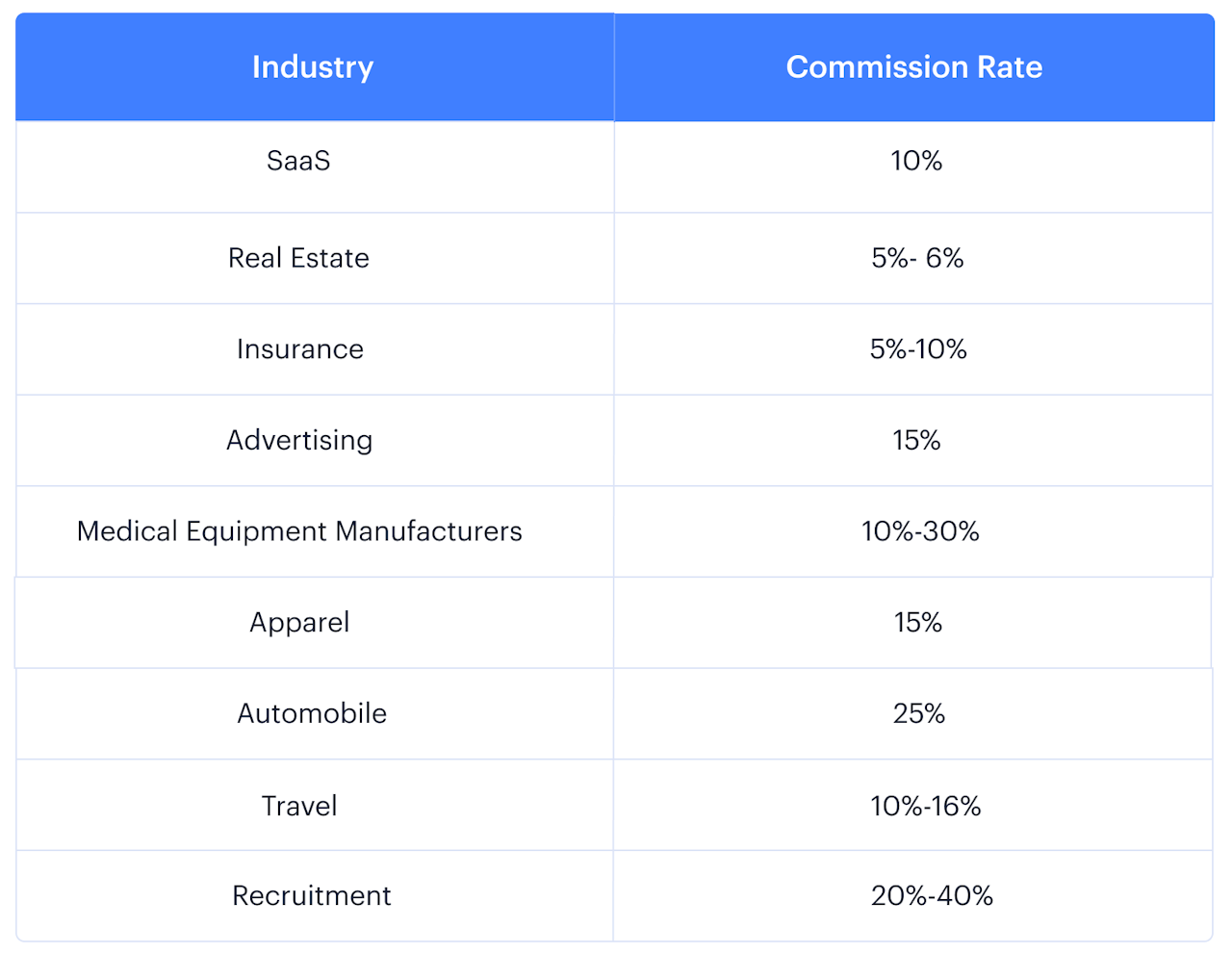
There’s no question about the importance of sales commission structures. The way you structure your specific plan according to your company’s unique needs and goals will make all the difference.
This guide was updated on May 16, 2023.
Get sales tips and strategies delivered straight to your inbox.
Yesware will help you generate more sales right from your inbox. Try our Outlook add-on or Gmail Chrome extension for free, forever!
Related Articles
Casey O'Connor
Casey O'Connor
Anya Vitko
Sales, deal management, and communication tips for your inbox

